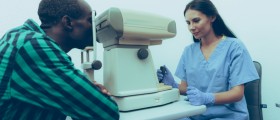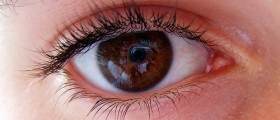
Diabetes mellitus or simply DM is a chronic illness affecting people all over the world. Many people suffering from diabetes have led sedentary lifestyle, they generally lack physical activity and have a specific diet.
This disease has been known to cause problems with functioning of many organs and tissues in the body, including the eyes. Diabetic patients frequently develop eye problems, such as corneal abnormalities, cataract, glaucoma, iris neovascularization and different neuropathies. However, one of the greatest problems is diabetic retinopathy, since it can be the cause of blindness in these patients. According to statistical data, diabetic retinopathy is responsible for most cases of newly diagnosed blindness in the United States among adult population. At the moment, figures reveal that about 700.000 people suffers from proliferative diabetic retinopathy and about 65.000 new cases are confirmed every year.
Causes of Diabetic Retinopathy
Doctors still cannot tell what exactly causes diabetic retinopathy, but there are several theories in the scientific community which might be able to explain what is happening to diabetic patients and their eyes.
One of these theories involves enzyme aldose reductase and vasoproliferative factors as major contributors to this condition. Diabetes is responsible for abnormal metabolism of glucose, which ends up converted into alcohol sorbitol. As a result, sorbitol affects retinal capillaries and causes their weakness and microaneurysms (the first sign of diabetic retinopathy).
Growth hormone may also be involved in the development and progression of retinopathy in diabetic patients. Other possible causes of this problem can be changes in platelets and viscosity of the blood, leading to ischemia of the retina and development of retinopathy.
What Are Symptoms?
Early stages of diabetic retinopathy usually do not show any symptoms of the disease. Microaneurysms are considered to be the first sign of diabetic retinopathy and in advanced stages patients may experience various vision changes such as distortion, blurred vision or floaters. Redness of the eyes or eye pain are also possible symptoms of diabetic retinopathy.
Patients – Be Informed!
Diabetics must be informed about their condition and possible medical consequences, in order to pay special attention to their health. When it comes to diabetic retinopathy, they must be aware that systemic problems, like hyperlipidemia, hypertension (high blood pressure) and kidney disease may contribute significantly to their eye problems. Lifestyle habits such as smoking are associated with further problems related to the eyes of diabetic patients and, therefore, this is something that should be quit immediately.
If you are diabetic and notice any problem or change regarding your eyes, you must consult your doctor as soon as possible.

















Your thoughts on this
Loading...